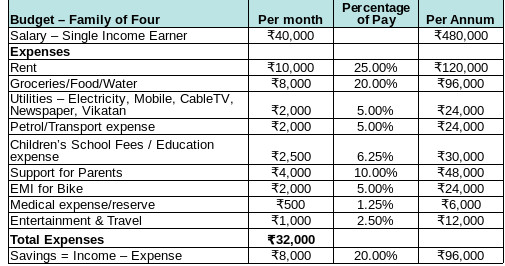FIIs, DIIs and RIs - Part II
DIIs (Domestic Institutional Investors)
The largest DII in the capital market is LIC followed by other insurers and Mutual fund houses. LIC has a total assets under management of Rs.17.69 Lac crores ($295bn) and it has an investible corpus of Rs.2.25-Rs.3 Tn ($38-$50bn) p.a to invest in capital markets. LIC predominantly invests its corpus in government debt (80%) and the rest 20% in equity markets. Typical size of equity investment is Rs.550 bn ($9.1bn). Mutual Funds too invest about 80% in debt market and 20% in equity markets but their total AUM (Assets Under Management) itself forms only 60% of LIC's AUM.
RIs (Retail Investors)
The so called 2% retail investors that invest directly in equities are typically driven by market sentiments. They buy high & sell low only to realize that equity is a zero sum game. However a selective few that understands the market have stayed long for 7-15 years and have realized 20-25% annualized returns.
Is RI the ACTUAL DII?
Looking at the entire equation from a tangential view point, it is apparent that every one who buys a non-term insurance policy (especially LIC) is indirectly contributing to the Indian Capital market (Debt & Equity). While this is good news, the bad news is that such an investor does not reap returns commensurate with the debt and equity market returns. It must be remembered that the price one pays for the words "guaranteed returns" & "assured returns" is personal wealth erosion, as a policy holder gets back only a paltry return of 2-5% from his/her insurance policies. So, a natural question is where do the excess returns go? The reality is the policyholders are subsidizing the government's deficit budget by a huge margin year after year at the cost of their own returns.
Time to wake up?
As being done in socialist developed countries where a high tax is used to develop good education, healthcare and world-class infrastructure, it makes sense to pay such high taxes &/or support/subsidize the government's debt expenditure (say thru insurance policies). However in a country where social security, retirement benefits, education & healthcare are all the personal responsibility of an individual, does it not make sense for one to take responsibility of one's financial savings too? Talk to your planner to determine whether your non-term policies (money back, endowment, annuity, pension plan, ulip etc) meet your return requirements or do they only erode your savings in the name of "assured returns" in the long term?!
The largest DII in the capital market is LIC followed by other insurers and Mutual fund houses. LIC has a total assets under management of Rs.17.69 Lac crores ($295bn) and it has an investible corpus of Rs.2.25-Rs.3 Tn ($38-$50bn) p.a to invest in capital markets. LIC predominantly invests its corpus in government debt (80%) and the rest 20% in equity markets. Typical size of equity investment is Rs.550 bn ($9.1bn). Mutual Funds too invest about 80% in debt market and 20% in equity markets but their total AUM (Assets Under Management) itself forms only 60% of LIC's AUM.
RIs (Retail Investors)
The so called 2% retail investors that invest directly in equities are typically driven by market sentiments. They buy high & sell low only to realize that equity is a zero sum game. However a selective few that understands the market have stayed long for 7-15 years and have realized 20-25% annualized returns.
Is RI the ACTUAL DII?
Looking at the entire equation from a tangential view point, it is apparent that every one who buys a non-term insurance policy (especially LIC) is indirectly contributing to the Indian Capital market (Debt & Equity). While this is good news, the bad news is that such an investor does not reap returns commensurate with the debt and equity market returns. It must be remembered that the price one pays for the words "guaranteed returns" & "assured returns" is personal wealth erosion, as a policy holder gets back only a paltry return of 2-5% from his/her insurance policies. So, a natural question is where do the excess returns go? The reality is the policyholders are subsidizing the government's deficit budget by a huge margin year after year at the cost of their own returns.
Time to wake up?
As being done in socialist developed countries where a high tax is used to develop good education, healthcare and world-class infrastructure, it makes sense to pay such high taxes &/or support/subsidize the government's debt expenditure (say thru insurance policies). However in a country where social security, retirement benefits, education & healthcare are all the personal responsibility of an individual, does it not make sense for one to take responsibility of one's financial savings too? Talk to your planner to determine whether your non-term policies (money back, endowment, annuity, pension plan, ulip etc) meet your return requirements or do they only erode your savings in the name of "assured returns" in the long term?!


Comments
Post a Comment